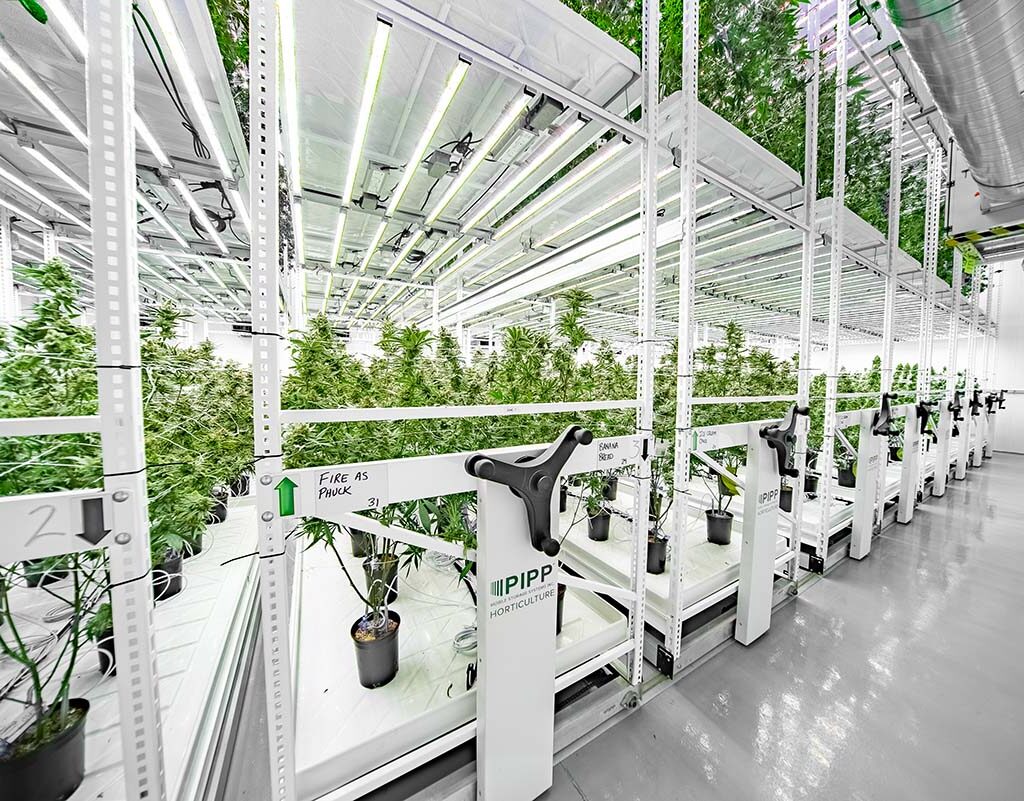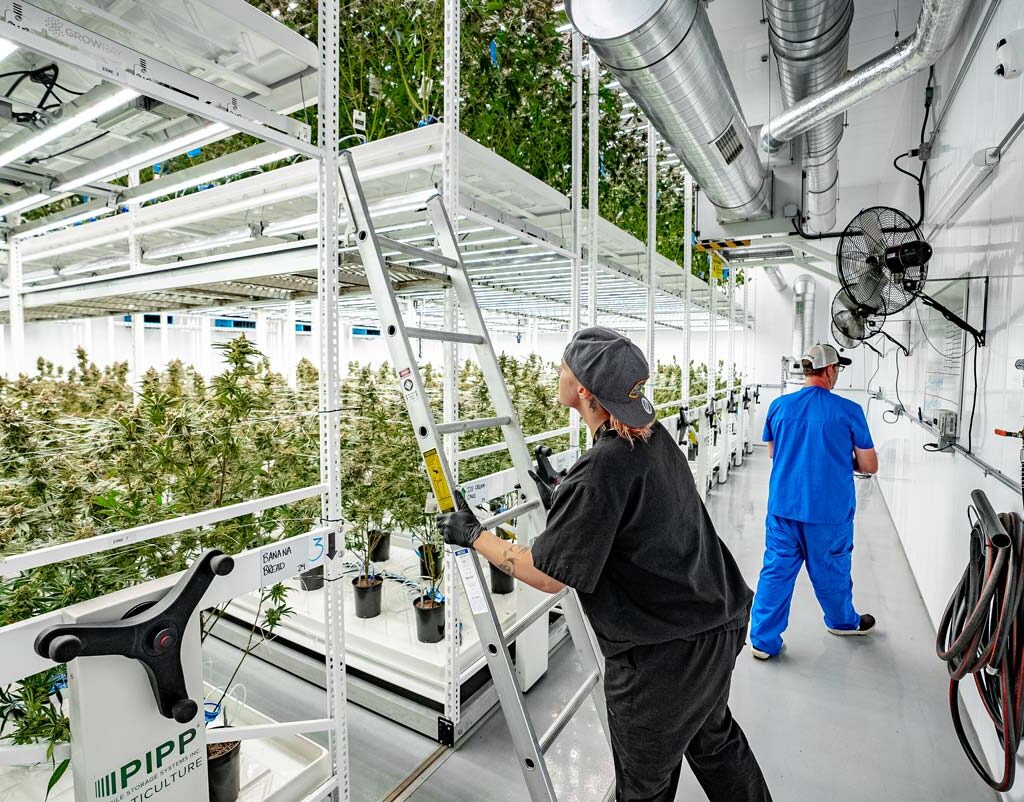Retro-Commissioning for Cannabis Cultivation: Fixing Inefficiencies and Maximizing Facility Performance
If your cannabis facility wasn’t properly commissioned before startup, you’re not alone.
Many growers rush to bring plants in, only to encounter inefficiencies, regulatory issues, and underwhelming yields. Fortunately, retro-commissioning (RCX) offers a structured way to assess and optimize facility systems, improving efficiency and profitability without requiring a complete overhaul.
Retro-commissioning is the process of evaluating, testing, and recalibrating existing facility systems to improve performance—whether they were never commissioned properly or have simply degraded over time.
This article provides a comprehensive technical roadmap to optimize facility operations even if you’ve already moved the plants in.
Why Retro-Commissioning Matters
Failure to optimize facility systems before cultivation can result in the following challenges:
- Inconsistent climate control → Fluctuations in temperature, humidity, and airflow
- High energy costs → Inefficient HVAC, dehumidification, and lighting systems
- Irrigation and fertigation inconsistencies → Uneven water and nutrient delivery
- Poor airflow and microclimates → Increased disease risks and pest pressure
- Regulatory non-compliance → Increased risk of crop recalls and legal fines
Retro-commissioning helps eliminate these inefficiencies while improving system longevity and crop consistency.
Step 1: Comprehensive Facility Audit
Before making any adjustments, conduct a thorough operational and environmental assessment. This phase identifies inefficiencies, equipment failures, and optimization opportunities.
Key Actions
- Conduct a full HVAC, lighting, fertigation, and control system inspection
- Collect at least one full grow cycle of real-time environmental data (temperature, RH, VPD, CO₂, etc.)
- Perform airflow mapping using smoke tests or fog machines
- Identify hotspots, humidity imbalances, and airflow dead zones
- Conduct irrigation distribution testing (using calibrated flow meters or graduated cylinders)
- Verify equipment energy consumption (use smart meters and building automation logs)
- Assess sensor calibration and placement (humidity, temperature, CO₂, VPD)
Tools Needed
- Wireless data loggers (track temp/RH/VPD/CO₂ trends across different zones)
- Infrared thermometers & FLIR cameras (detect HVAC inefficiencies and thermal leakage)
- Anemometers (measure air velocity in grow rooms and ducting)
- Water pressure gauges (test fertigation and irrigation uniformity)
- Smart energy monitors (track HVAC and lighting power draw)


Step 2: HVAC System Optimization
HVAC systems are the backbone of indoor cultivation, yet many are improperly sized, misconfigured, or underperforming. Retro-commissioning helps maximize efficiency and prevent system failures during peak plant growth phases.
Key Actions
- Verify air exchange rates (calculate required CFM per room based on plant transpiration rates)
- Check and adjust dehumidifier load capacity
- Dehumidification should match daily plant transpiration at the room conditions you are trying to achieve
- Test actual pints per day (PPD) removal vs. equipment specs
- Balance airflow to eliminate microclimates
- Measure static pressure in ductwork to detect airflow restrictions
- Verify humidity deadbands
- Target Range: 50%-70% RH during flower
- Ideal VPD: 1.0-1.4 kPa for optimal transpiration
Common HVAC Fixes
Issue | Solution |
Uneven temperatures | Adjust ducting, reposition supply/return vents |
High humidity | Increase dehumidifier cycling, optimize air exchanges |
Excessive HVAC cycling | Optimize setpoints to prevent unnecessary runtime |
Low CO₂ levels | Adjust injection rates, verify sensor calibration |
Step 3: Airflow Mapping and Correction
Poor airflow creates dead zones where temperature and humidity stagnate, increasing disease risks and lowering yields.
Key Actions
- Map airflow patterns with smoke pencils or fog machines
- Identify hotspots and cold zones
- Optimize fan placement
- Adjust in-rack airflow systems to direct conditioned air through canopies
- Increase airflow speed in dense canopy areas
- Target velocity: 100-200 ft./min. in veg and 150-300 ft./min. in flower
- Ideal air exchange rates: 20-30 air changes per hour (ACH)
- Vertical farms: Use in-rack ducting with high-velocity diffusers
Step 4: Irrigation & Fertigation Calibration
Irrigation inconsistency leads to uneven nutrient delivery, nutrient lockout, and crop variability.
Key Actions
- Test dripper output across multiple zones (record volumes in 60-second intervals)
- Check EC & pH variability between fertigation cycles
- Flush sediment and biofilm from irrigation lines
- Optimize drainage rates to prevent salt buildup
- Install flow sensors and pressure regulators for precision fertigation
Benchmark Targets
System Component | Ideal Parameter |
Dripper Flow Rate | ±5% of manufacturer spec |
Irrigation Uniformity | ≥90% consistency |
Nutrient EC Variability | ≤0.2 dS/m deviation |
Drainage Percentage | 15–30% of input volume (if needed for your fertigation strategy) |

Step 5: Lighting Recalibration
Lighting imbalances affect photosynthesis, cannabinoid biosynthesis, and overall yield.
Key Actions
- Measure PPFD across the canopy to identify weak spots
- Adjust fixture height and spacing for uniform light distribution
- Ensure DLI (Daily Light Integral) targets are met
- Calibrate light spectrum settings for each growth phase
- Sync lighting schedules with HVAC cooling cycles to reduce peak demand
Recommended PPFD Levels
Growth Stage | PPFD Target (µmol/m²/s) |
Cloning | 100–200 |
Veg | 300–600 |
Flower | 700–1,100 |

Step 6: SOP Updates & Data-Driven Optimization
Retro-commissioning is not just a one-time fix. SOPs should evolve based on new environmental insights.
Key Actions
- Update SOPs with revised system settings
- Train staff on new fertigation, HVAC, and lighting protocols
- Implement real-time monitoring dashboards for continuous data tracking
- Conduct quarterly re-assessments to maintain peak facility performance
Data Tracking Recommendations
- Automate environmental logging (Temp, RH, CO₂, VPD)
- Record nutrient runoff EC & pH trends
- Maintain weekly energy efficiency audits (track HVAC & lighting power draw)
Turning Inefficiency into Profitability
Retro-commissioning is a long-term investment. By systematically optimizing HVAC, lighting, irrigation, and workflow systems, cannabis cultivators can lower costs, reduce risks, and maximize yield quality.
Although initial RCX may require minor downtime, the return on investment in higher productivity and reduced operating costs far outweigh the inconvenience.
Whether you run a small boutique grow, or a large-scale commercial facility, optimizing your systems through RCX is one of the most effective ways to ensure profitability and longevity in the evolving cannabis market.
Next Steps:
- Conduct a full facility audit.
- Implement one retro-commissioning fix at a time.
- Track ROI from system improvements.
- Continuously refine SOPs and workflow efficiencies.
- Retro-commissioning transforms an underperforming facility into a streamlined, high-efficiency operation—ensuring cannabis growers stay competitive and profitable for years to come.
